NVIDIA Optical Flow SDK
The NVIDIA Optical Flow SDK taps in to the latest hardware capabilities of NVIDIA Turing™, Ampere, and Ada architecture GPUs dedicated to computing the relative motion of pixels between images. The hardware uses sophisticated algorithms to yield highly accurate flow vectors, ideal for handling frame-to-frame intensity variations and tracking true object motion.
Get Started Turing hardware-generated optical flow map sample —
source footage
Turing hardware-generated optical flow map sample —
source footage
Optical Flow Benefits
Accurate Video Analytics
Accurately detect and track objects in successive video frames while significantly reducing the computational complexity requirements.
Real-Time Performance
Interpolate or extrapolate video frames in real time, improving smoothness of video playback or reducing latency in VR experiences.
GPU Acceleration
Get performance optimized for Turing, Ampere, and future generations of NVIDIA GPU architectures that includes high-speed computation of accurate flow vectors with little impact on the CPU or GPU.
Performance
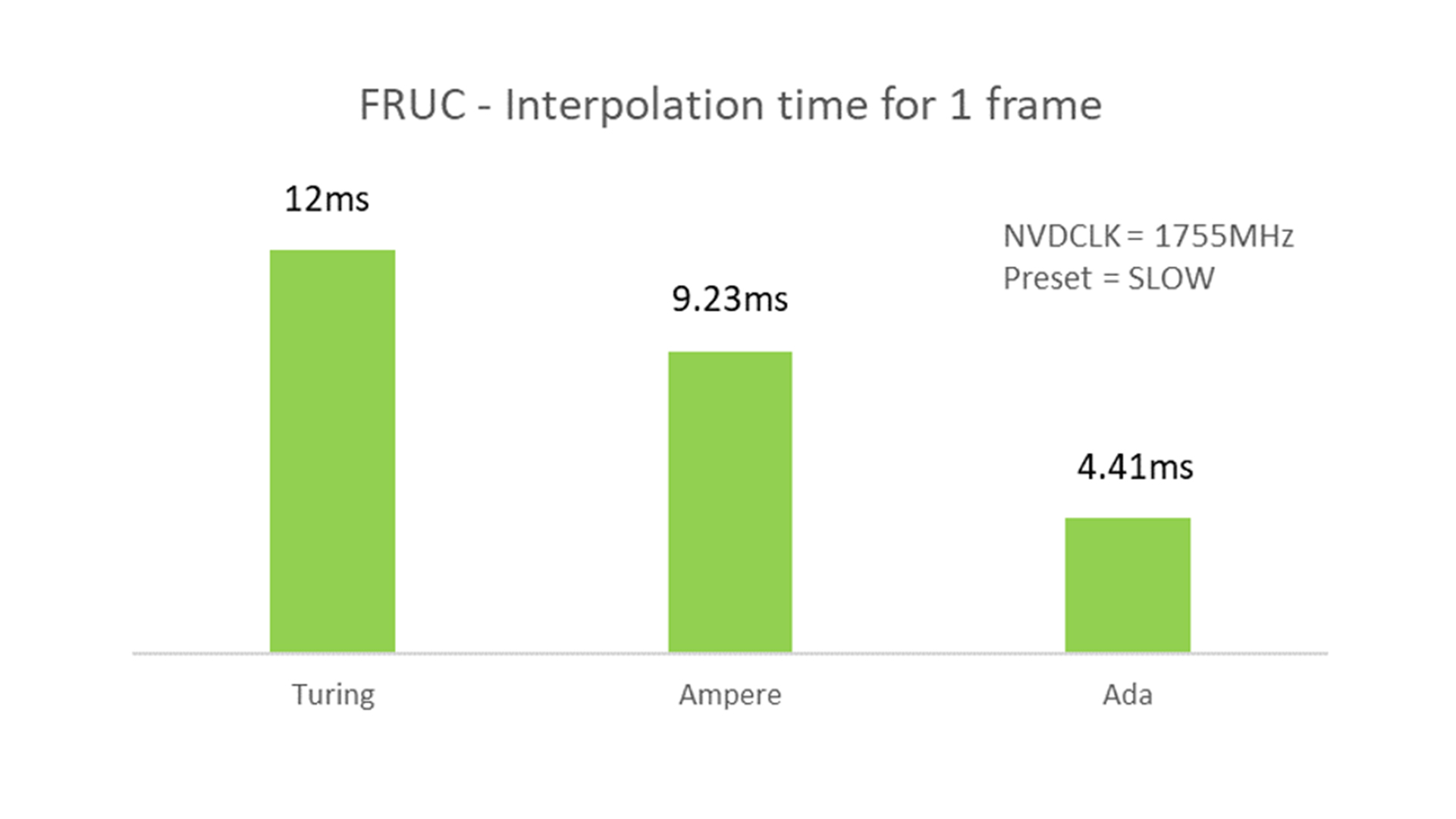
Frame Interpolation Time
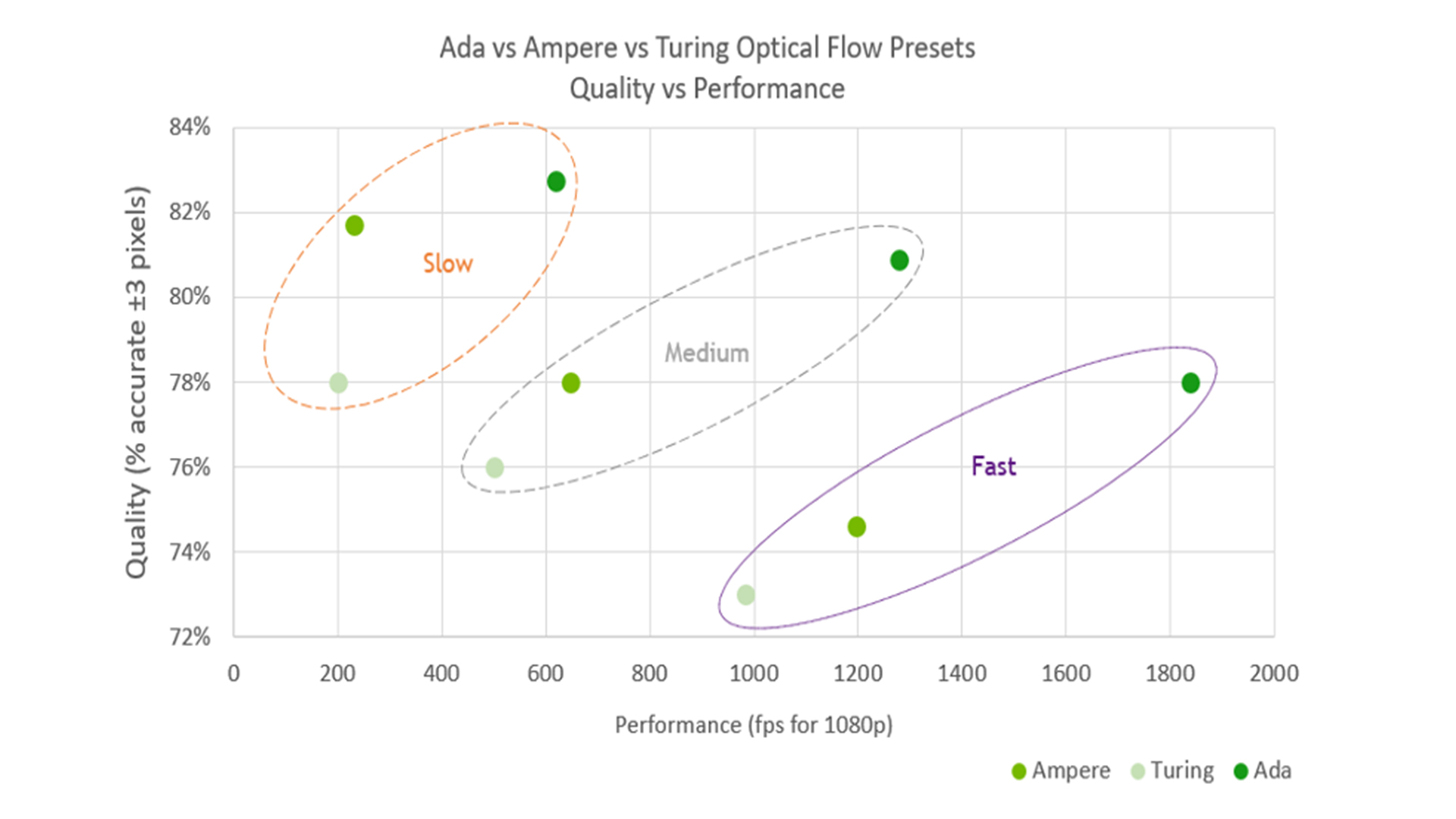
Optical Flow Quality metrics
Optical Flow Engine-Assisted Frame Rate Up-Conversion Library
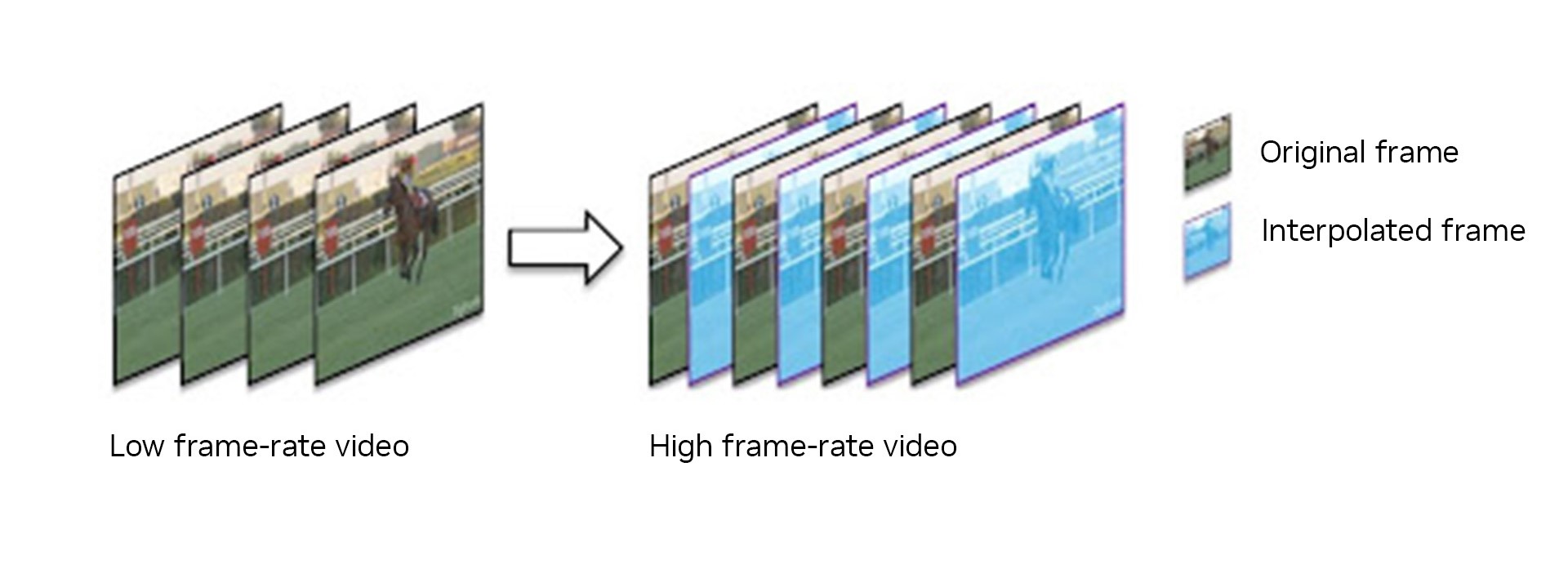
NvOFFRUC interpolates new frames using optical flow vectors to double the effective frame rate of a video. The result is improved smoothness of video playback and perceived visual quality.
Learn More About Frame Rate Up-ConversionObject Tracking for Intelligent Video Analytics
Optical Flow SDK 2.0 introduced an object tracker library based on optical flow, along with source code and ready-to-use API. In our experiments, the optical flow-based object tracker has been shown to reduce the GPU utilization by up to 80%, compared to some of the most popular algorithms without compromising the accuracy of tracking. Optical Flow SDK 3.0 introduces a DirectX12 Interface, forward and backward flow and a global flow vector.
Learn More About Optical Flow SDK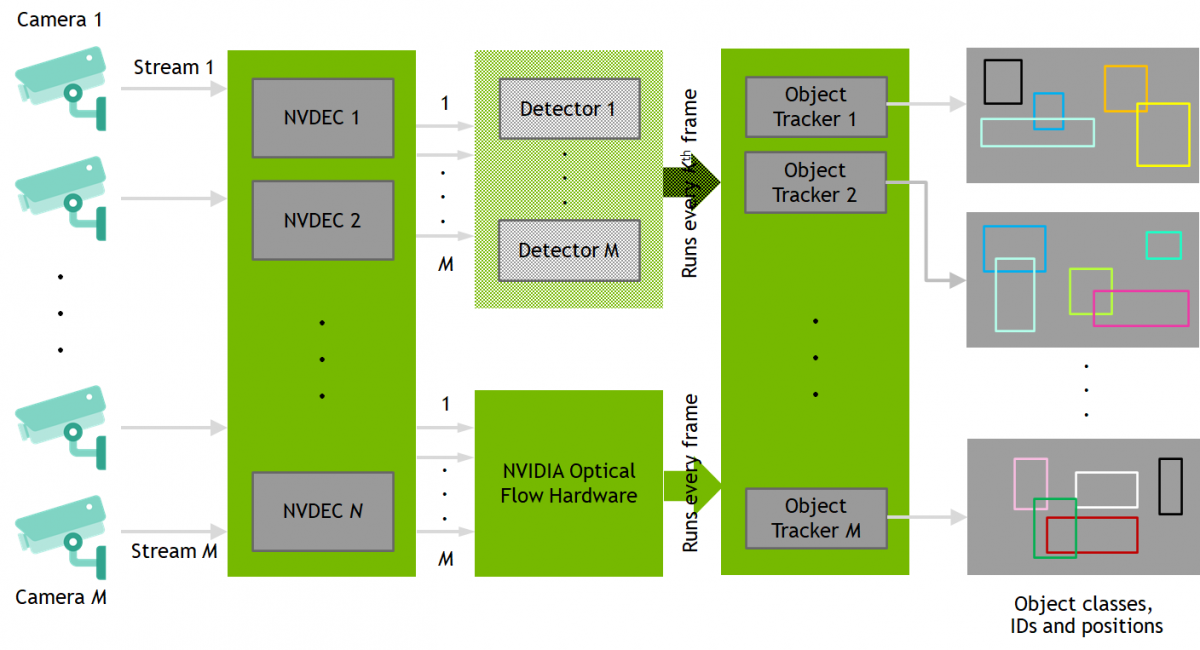
Video Frame Interpolation and Extrapolation
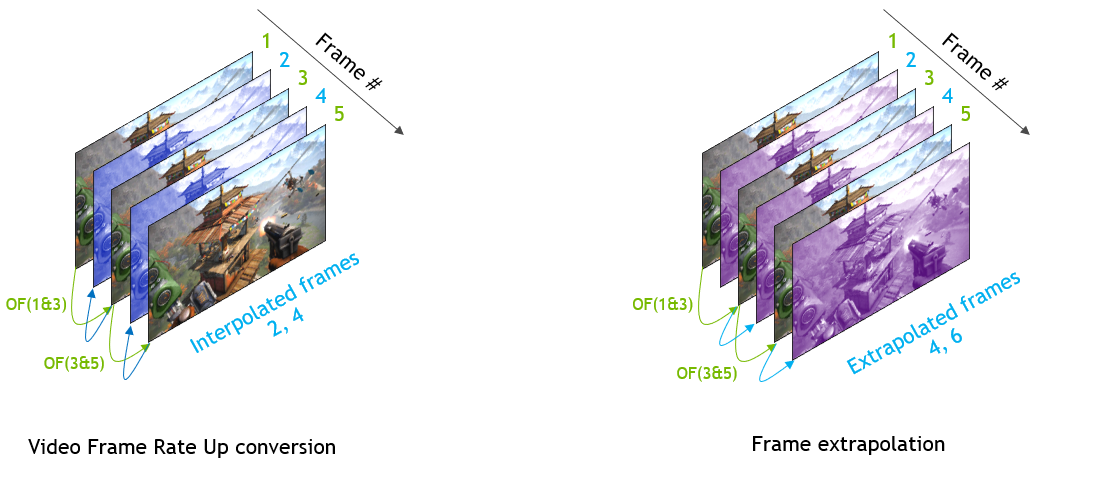
Optical flow can also be used very effectively for interpolating or extrapolating video frames in real time. This can be useful in improving the smoothness of video playback, generating slow-motion videos, or reducing the apparent latency in VR experience. Optical Flow functionality in Turing and Ampere GPUs accelerates these use cases by offloading the intensive flow vector computation to a dedicated hardware engine on the GPU silicon, thereby freeing up GPU and CPU cycles for other tasks. This functionality in hardware is independent of CUDA cores.
Learn More About Video Frame Interpolation and Extrapolation